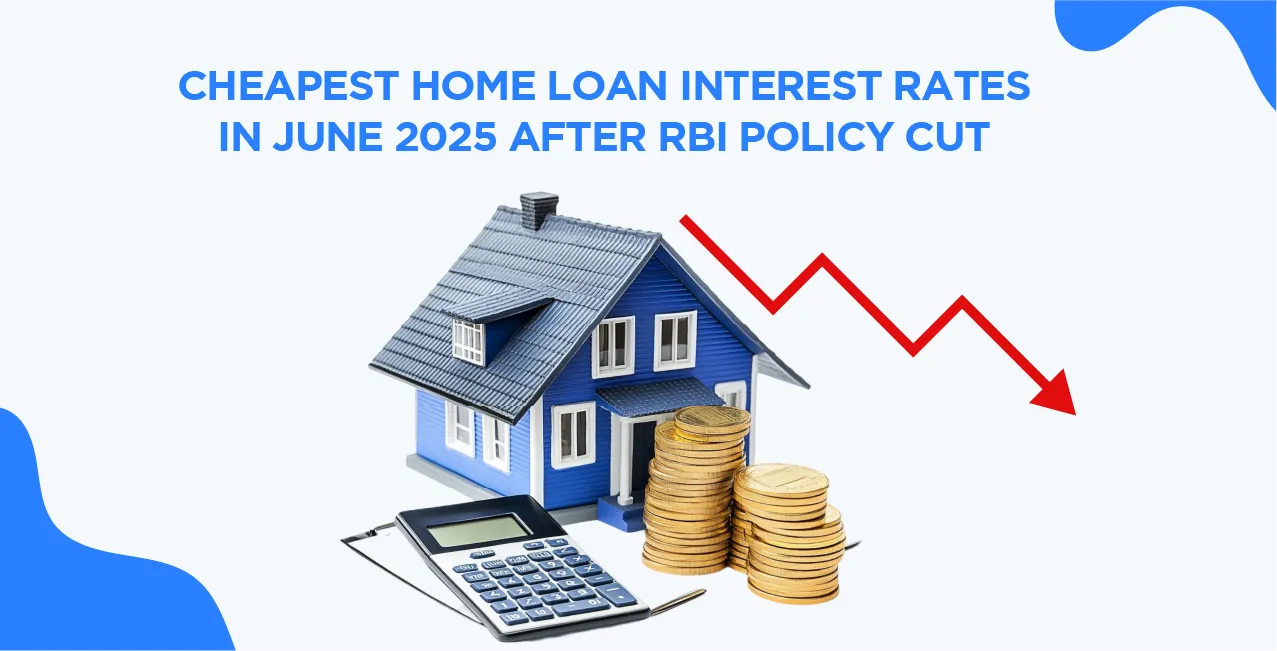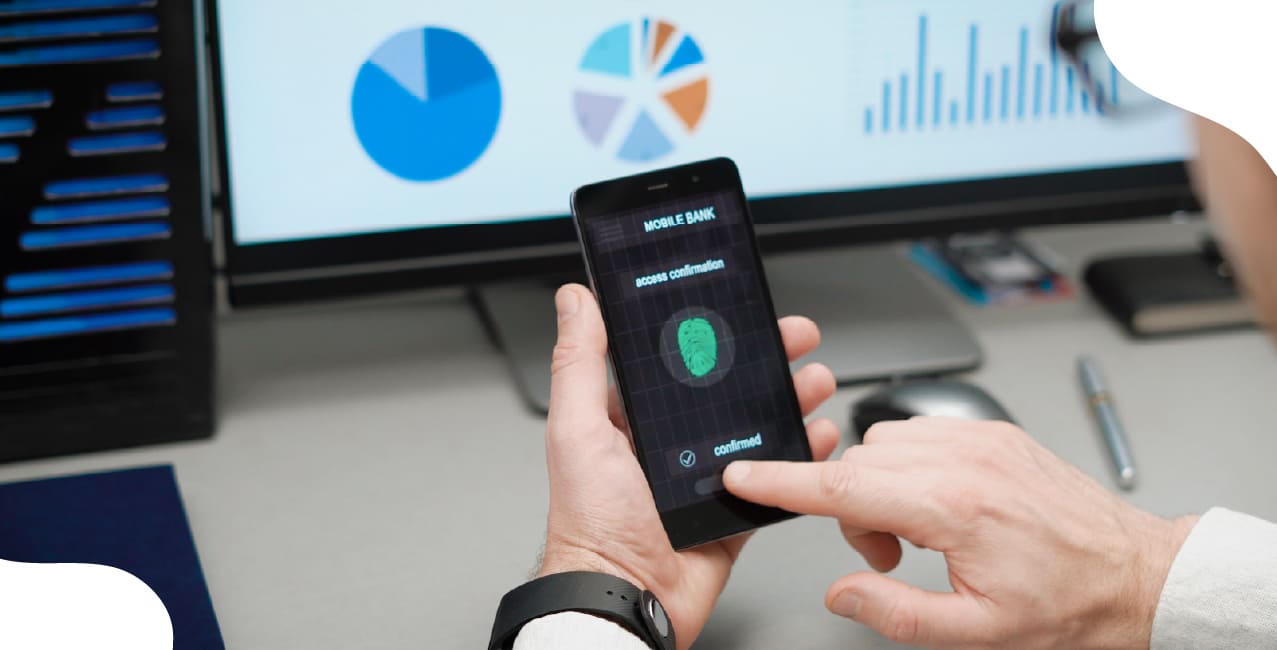
Author
Siddhanshi Sharma
Read Time
8 Minute
12 Feb 2025
How Much EMI Will You Save After RBI Repo Rate Cut in February 2025?
Harshit, a salaried employee with a monthly income of ₹ 80,000, took a home loan worth ₹ 50,00,000 in December 2021. Bank ‘X’ granted him the loan amount at an interest rate of ₹ 9%, with a pay-off tenure of 10 years.
Harshit has to pay an EMI of ₹ 63,338 for 10 years. As per this information, the principal amount would be ₹ 50,00,000, and the total interest would be ₹ 26,00,000. Now, if the interest rate gets reduced by 25 base points, i.e., 8.75%, his new EMI would be ₹ 62,663.
With this lowered interest rate, Harshit would save approximately ₹ 1000 monthly on EMIs and pay just ₹ 25,19,000 as total interest on the principal amount. This saving of approximately ₹ 1,00,000 would ease some of the financial burden.
The RBI has announced this repo rate cut to help retail and business loan borrowers. So, if you found the above-stated example of some use, scroll down and learn how this rate cut will affect you in real-time.
The 1st Rate Cut by RBI Since March 2020
The Monetary Policy Committee held a meeting on February 5, 6, and 7, 2025. After a unanimous vote by all 5 members of the MPC, they said “Aye” to the repo rate cut of 25 base points.
This rate cut is surprising because the RBI kept the rates unchanged for the last 5 years, since March 2020. To recover from the repercussions of the COVID-19 pandemic, ‘The Apex Bank’ cut down the repo rates by 75 base points, lowering it to 4.40 percent.
Read More – Will Personal Loan Interest Rates Drop in 2025?
Recently, bringing down the repo rates from 6.50 percent to 6.25 percent is projected to balance the trade-off (the act of balancing between two opposite situations) between economic growth and sluggish inflation. The Marginal Standing Facility and Bank Rate shall be 6.50 percent, and the Standing Deposit Facility rate shall be 6.00 percent.
What’s the Reason Behind RBI’s Repo Rate Cut?
The current RBI governor, Sanjay Malhotra, acknowledged the flexible inflation targeting system for the lower average inflation rates since its introduction in 2016. Governor Malhotra stated that dipping inflation is the reason behind this rate cut, as the economy is expected to recover from the low of Q2 of 2024-2025.
In December of FY 2024-2025, MPC estimated the GDP growth to be 6.9 percent in Q1 of 2025-2026 and 7.3 percent in Q2 of 2025-2026. However, the latest numbers suggest a challenge to GDP growth.
Refer to this table and have a look at the expected real GDP growth for FY 2025-2026:
Quarter | Growth Percentage |
Q1 (January-March) | 6.7% |
Q2 (April-June) | 7.0% |
Q3 (July-September) | 6.5% |
Q4 (October-December) | 6.5% |
In December 2024-2025, MPC overestimated the 2024-2025 annual growth by 20 base points at 6.6%. However, according to the first advance estimate released in January, GDP growth in 2024-2025 is expected to be 6.4 percent.
The real GDP growth for the current year is 6.4, a softer expansion after a robust 8.2 per cent growth last year.
The RBI estimated the inflation to be around 4 percent, and the expected inflation is almost close to this target. The expected inflation is 4.2 percent. This will be the lowest inflation number since 2018-2019. In 2018-2019, the inflation was at 3.4%.
The inflation rate in a country directly affects the range of interest rates on loans offered by commercial banks. We have explained below how inflation affects the interest rates positively and negatively.
Why Does India Need Inflation for Economic Growth?
Let’s understand the concept of inflation with an example. Harshit bought a packet of Parle G biscuits for just ₹ 5 in 2019. However, the same biscuit costs him ₹ 8 in 2025. The rise of prices in contrast with the demand for goods is called inflation.
Inflation can be good for a country that has unused labour and resources. As money increases in an economy, the demands and wants of the general public increase. As the spending potential increases, the demand for goods increases. Therefore, unutilised labour and resources are used.
However, a slow inflation rate means slow economic growth as people refrain from spending and focus on saving money. To curb this sluggish inflation rate, RBI has announced the introduction of around ₹ 1.5 lakh crore of liquidity in the system in January.
The Indian government also gave a go-ahead to the $12 billion tax cut for the struggling middle class. All these policies are set to boost economic inflation and revive manufacturing activity in Q3 and Q4 of FY 2026.
Effect of RBI’s Rate Cut on Loans with Floating and Fixed Rate of Interest
The repo rate is the rate at which commercial banks can borrow money from the RBI. As the RBI has cut rates, it will become easier for commercial banks to borrow funds.
Banks can then lend these funds to the common public at a cheaper interest rate. But who will benefit the most?
Borrowers with floating interest rates will benefit the most. However, there are some terms and conditions to this good news. Refer to the points below to have a complete picture:
Also Read – Upcoming RBI Monetary Policy: Will Home Loan Rates Increase?
1. All the retail and business loan borrowers with a pay-off tenure of more than 7 years and loans linked directly to repo rates will benefit from this rate cut automatically. In a few months, the commercial banks might also bring down the interest rates by 25 base points.
2. While some banks might pull down the interest rates of your loans, other banks might choose to just reduce the pay-off tenure without impacting your EMIs.
For example, in the case of Harshit, instead of reducing his EMI by ₹ 1000 (approx.), bank ‘X’ might decide to cut the pay-off tenure from 10 years to just 9.5 years.
3. Although RBI has cut the repo rate by 25 base points, all the banks don’t need to pass down the same cut in interest rates. For example, in 2020, when RBI cut down the repo rates by 25 points, commercial banks passed on a mere 5 base point reduction due to their additional cost of funds or other internal policies.
4. While some banks may transition the complete reduction, others may keep the EMIs unchanged while decreasing the loan tenure. This strategy will help the borrowers pay off the loan much faster.
5. You will notice little to no positive impact on your interest rates or EMIs if you have a pay-off tenure of less than 7 years as these loans are generally given on fixed rate of interest and have no impact of repo rate changes on them.
The research team at LoansJagat has framed this blog with the help of an example in the beginning. Please don’t adhere to the example mentioned above as an official statement. This blog shall be utilised for informational purposes and not for making critical financial decisions.
About the Author

Siddhanshi Sharma
Siddhanshi Sharma is a reader's writer, like there is a director's actor. She has trained herself to understand the reader's intent and their queries. With over 4+ years of experience in the content writing industry. Siddhanshi has authored many blogs and articles for several BFSI organisations. While you are reading this blog, she is probably reading her blogs to identify some more mistakes that she overlooked.

Quick Apply Loan
Subscribe Now
Related Blog Post

LoansJagat Team • 10 Jun 2025

LoansJagat Team • 06 Jun 2025

LoansJagat Team • 22 Sep 2025